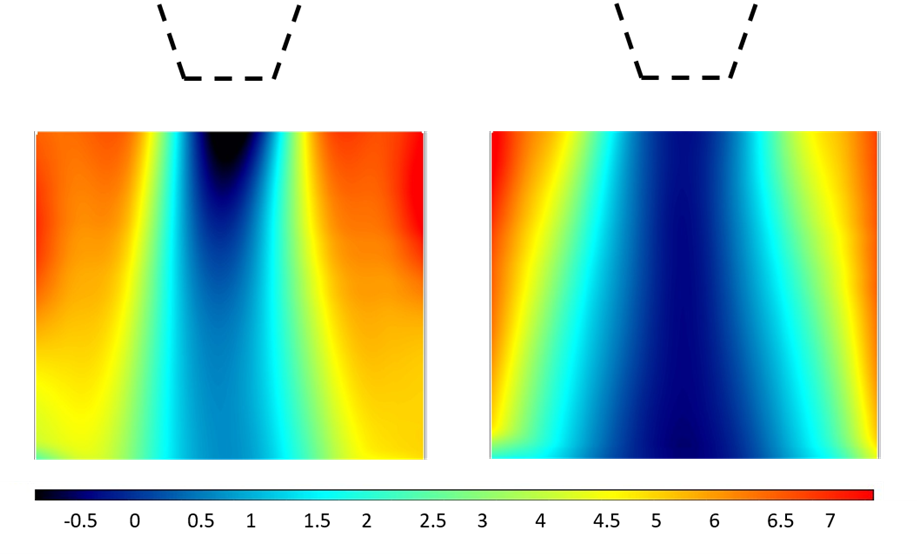The 2D particle image velocimetry (PIV) measurements in the draft tube cone of the LTU test rig have now been finalized with successful outcome. Initial qualitative analyses show expected results, with two examples shown in the figures below. The figures display the axial velocity at the best efficiency point (BEP) to the left, and part load (PL) to the right (the dashed lines denote the approximate location of the runner cone). We see a small recirculation region just below the runner cone, even at BEP but this is expected, and have been found also in numerical simulations of the old, 500 mm, U9 model located in Älvkarleby (c.f. figure 13 in the following paper: https://www.mdpi.com/1996-1073/13/12/3129), says Joel Sundström from LTU. At PL, the recirculation region is much larger than at the BEP and spectral analyses of the PL data (not shown here) exhibit a pronounced peak at 0.2 times the runner frequency; a very strong indication of the presence of a rotating vortex rope (RVR).

Fig 1- 2D PIV measurements of the axial velocity in the draft tube cone. The flow is from top to bottom and the dashed lines denote the approximate location of the runner cone. Note that the velocity is not measured all the way out to the wall of the drat tube.

Fig 1- Optical arrangement for stereoscopic PIV measurements.
Conventional 2D PIV has a large drawback when it comes to measuring the velocity in draft tube flows; it measures the axial and radial velocity and not the tangential velocity which is, arguably, the most interesting component to measure since the RVR is typically associated with large tangential velocities (note; the tangential velocity can be measured using 2D PIV if the test rig is operated with a fluid of higher refractive index than water such as glycerol, a mixture of mineral oil and heptane, diesel etc., but all these fluids have some undesirable property making them unsuitable to use. In addition, the draft tube bend would then also have had to been manufactured in Plexiglas, with the camera placed below the bend).
To overcome the drawback of 2D PIV, the LTU test rig is now being prepared for stereoscopic PIV, meaning that all three velocity components are measured in a plane. This requires a more advanced optical arrangement than 2D PIV, with to cameras looking into the draft tube at a 90 degree angle with respect to each other; see the figure below. “Stereoscopic PIV measurements are significantly more difficult to perform than 2D PIV, but we are hopeful to succeed”, says Joel Sundström.
